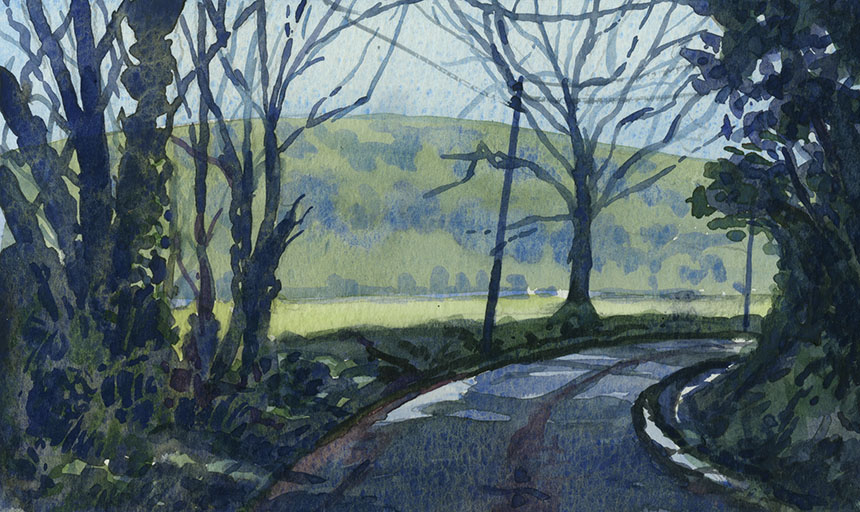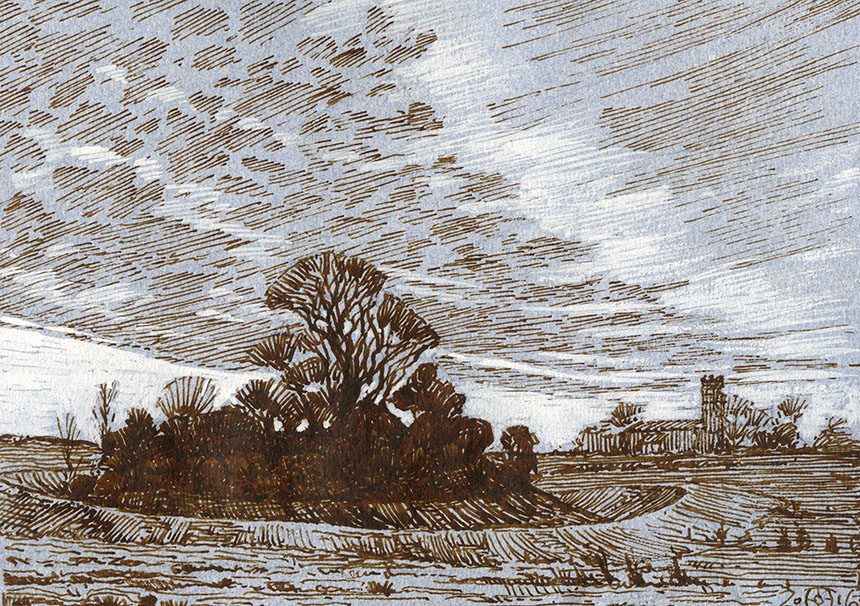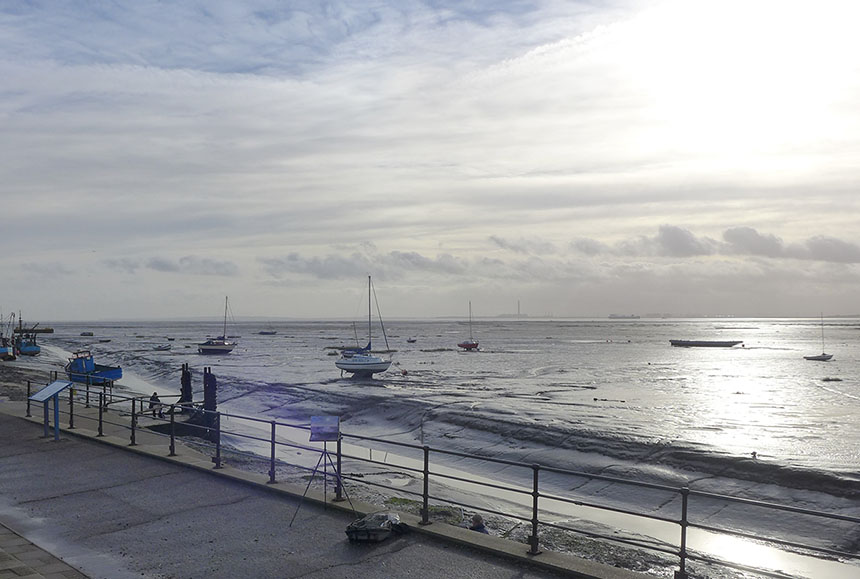Well that is the old year over with and the new one started. As always it is a moment to take stock. I started this quest to focus on my own work about 6 years ago now. The quest to improve has as far as I can tell born a certain amount of fruit, but it is always hard to tell for the artist as your expectations and hopes change too, so you always tend to feel you are falling short. I have hugely enjoyed learning new ways to do things and getting a more refined view of things I already thought I knew. You never of course completely learn anything you only add to or update your store of experience.
This blog has been a pleasure to do also, forcing me to think more clearly about various aspects, both practical and intellectual, in order to set down my thoughts. Reading back I don’t always agree with my earlier self, which is again a good thing as it shows I am perhaps not too set in my ways. I have been astonished at how many people have viewed my paintings and ponderings. People obviously have far too much time on their hands!
Painting as a business has been slower and harder to assess. The activity now pays for itself and supplies a tiny profit… I work, I estimated, for the hourly rate of 50p an hour, so I will have to take myself to court for breaching the minimum wage! In actuality I could have probably made enough to get by on. The problem is that I would have had to halve the painting time and devoted those hours to actively selling and promoting. This would increase income and lower the output of pictures. This would hardly matter as I suspect very few artists sell more than 20% of their output and many more far less.
It is very hard to assess your own progress. You are too close and it is almost impossible to view the facts dispassionately. The tendency is to veer between elation and despair, which is probably about right if I can keep the swings to a moderate amplitude! I find it a little hard to divide up my attention, I am always being tempted by new and interesting byways. Printing has been the only one I have allowed myself to take which had proved very worthwhile. Forcing me into new ways of thinking in order to exploit the process.
If I was to point to one worthwhile thing I have discovered so far it would be that limits are very important. We live in an age of almost unlimited possibilities and an almost complete lack of rules. We tend to scorn anything that we perceive as reducing our choices, after all barriers are there to be overcome, are they not? Well if they are real barriers yes, but todays barriers are tissue thin except for the one of unlimited choice which we tend to ignore.
Rules have another importance which is harder to get your head around. Without them it is impossible to track your progress at all. Without aims that can be defined how can you estimate degrees of success or failure? Is the picture I just painted good or bad or what mix of the two? At what point and by what criteria do decide if a painting is a triumph or an epic fail? What is the role of technique in success or failure? I increasingly get to the point where I can’t find anything technically wrong with a painting, but it still doesn’t quite fly. Just because you can do something does not mean that you should, technique is very beguiling in this respect.
Other painters often talk to me of their quest to simplify and reduce, which I understand and share, but can’t somehow think it quite that straightforward. A picture after all could be averaged to a single tone if the process was taken to extreme. What if the subject itself is most notable for its complexity? The idea is of course that we exclude detail that is not telling and distracts from the whole. The theory is that as in making whisky you distill and increase the potency of your image. Like all oversimplifications it is beguiling but doesn’t really bear up under close examination. There are after all many great works of art that are a blizzard of detail. If I imagine myself standing next to the 15C painter Van Eyck and saying to him,” It’s a good effort my dear chap, but rather overworked don’t you think? Have you tried being more expressive? Perhaps you should use bigger brushes.” it doesn’t quite work, I think you will agree.
So a quest for the new year is: what is the relationship between the quantity and quality of content? What is the relationship between a picture that makes a good first impression and one that will beguile and intrigue over time? Like all things to do with art I don’t expect to resolve anything, just go through the process of considering which will perhaps shed a little light.
So on to Christmas paintings. Watercolour was the order of the day and mostly just sketches in my Moleskin. I also didn’t manage much painting on the spot but just looked, sketched out and took photos and painted in the evening. Not an intentional methodology but rather a pleasurable one I found.
Here I am in the Burren in County Clare in Eire. The area is very distinctive with its limestone pavements, grikes and erratic boulders. I always paint at least one picture of this subject when I visit. A large amount of imagination here as my reference was a black silhouette. I rather enjoyed trying to paint my memory of it a few hours before. The result gets nearer than the photo to the mood, the rays of light which were not in the reference I later realised were the result of dirty spectacles!
A road near Kilthurla close to Kinvarra. A sketch done on the spot very very fast as the light was going rapidly.
The same scene from reference that evening, would you have known which was plein air? I’m not sure I would. All plein air painters reading this will now feel sure that they could spot the one done from reference instantly. But what if I was fibbing and it is the other way round?
Now if you tried to do this en plein air you would be dead! This is called the “New Line” it is a famine road built by a program to give work and thus payment to the impoverished during that great and bitter catastrophe where for the most part the wealthy stood by and allowed the poor to starve. Some of these roads were never finished and remain as roads to nowhere. The labour must have been immense with it all being done by hand in the harshest of landscapes. They must have slept and lived on site. As a result these roads are arrow straight and nowadays a race track for cars.
Rather over cooked this one, got the balance between foreground and background wrong. This is on Finvarra which is almost an island.
This is Ballyportry castle near Corofin. A subject I have painted many times. We had wonderful skies throughout my visit. Watercolour is so good at describing luminosity. Far harder in oils.
This is County Clare’s county town Ennis in a pre Christmas frenzy. To complete the scene you should imagine distorted and very mawkish country and western seasonal songs being played through tinny tannoy speakers scattered liberally around the town. I had to stand in this spot for nearly 20min until I got a few moments when it wasn’t solid stationary traffic. Its hard being a painter sometimes.
This is near Weir Village in Co Galway. I hadn’t explored this part of the coast and will return as it has an interesting flavour with low-lying land divided by long inlets from the sea.
This is Dunguaire castle near Kinvarra. I sketched this out pretty much completely and then “coloured it in” in the evening. The underlying wash went awry so I added body colour which in the end worked better than the wash would have… serendipity in action!
This is Dysert O’Dea castle the local clan chieftains’ hangout. This is a very quick scribble as I was plodding around soggy fields looking for good viewpoints. I saw several but all impossible to get to without swimming.
Don’t know why I did this random road in East Clare… anything to distract from the first hangover of the New Year maybe…
Actually got most of this done on site. Sitting in my nice warm car mind you… It is Kilmacduagh Abbey which I have done many times. Pleased with this one though so might do an oil from it.
To that end I did a drawing from the watercolour. Think I prefer the wider format though.
Dunguaire Castle again. It is in a great position I must do an oil next time I go over.
Dunguaire again but with added sheep. I will do an oil of this as I haven’t done a sheep painting in a while…
I forget the name of this place not far from Durrow, it is an old Motte on which a stone castle would have stood. A bleak spot and I got very cold.
This is the causeway to Aughinish near Kinvarra. I had just sat and watched a truly spectacular sunset and not bothered to paint it! I have learnt to just appreciate sunsets and only paint the more tasteful ones.
Well that is it, as always I am surprised at how much I got done at the same time as feeling I should have spent less time spacing about and more time painting.






















